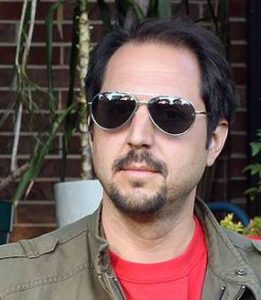
Most Americans don't know a thing about traditional Chinese music and dance, so when a performance group like Shen Yun comes along proclaiming that their show is a celebration of China's cultural traditions, we go along for the ride. However, there's a lot more than music and dancing going on in this show.
As far as tradition is concerned, the marketing for the show does not explicitly state that this is an authentic representation of the Chinese arts. In fact, they advertise that their show is a “Perfect Harmony of East & West,” and given that most of the music is performed by a modern orchestra, complemented with Chinese instruments such as the erhu and the pipa, its sound is more reminiscent of John Williams's score for Indiana Jones and the Temple of Doom than of traditional Chinese music. Musical highlights include the incredible pipes of sopranos Tianling Song and Haolan Geng and, in perhaps the most traditional moment of the show, the erhu performance of Xiaochun Qi. All three solo artists are accompanied by the talented pianist Xin Lian.
]
As far as the dancing is concerned, the performers are clearly highly skilled and disciplined in their routines; however, some of the choreography is a bit bewildering. I concede that I know nothing about traditional Chinese dancing, and there are several numbers involving lotus props, fans, long sleeves, and ribbons which are very beautiful to watch, but some of the routines consist of so many groups of dancers moving about the stage that it is often difficult to find a focal point, and the spectacle is sometimes overwhelming.
The digitally projected backgrounds are cleverly synchronized with the onstage choreography, and the dancers frequently disappear from the stage in tandem with their likenesses appearing on the screen and flying up to the moon or into a similarly fantastical scenario. This technique provides a nice dynamic for the enactment of the various mythical tales that are told throughout the performance. Most of the tales come from traditional folk stories, but some are thoroughly modern. This brings us to the origin of Shen Yun.
[

Shen Yun was founded in New York, in 2006, by practitioners of Falun Dafa. Falun Dafa is a spiritual movement that started in 1992, and whereas the traditional religions of China are Confucianism, Taoism, and Buddhism, Falun Dafa is powerfully promoted throughout the narratives of Shen Yun's show — as is an overt portrayal of Communist China as an evil empire that needs to be destroyed (towards the end of the show, Buddha influences a tidal wave to come and demolish Shanghai — which seems rather un-Buddha-like).
The show is very well-produced, and it is evident that Shen Yun's creators were principally driven by a desire to create an epic showcase. They succeed on some levels; viewers who aren't bothered by the Falun Dafa proselytizing will likely enjoy the spectacle as they would a show like Walt Disney's Magic Kingdom on Ice. People well-versed in traditional Chinese music and dancing will either see this show as a touching nod to their cultural heritage or as a facade which pays lip service to it. For the rest of us, there's a chance that we may either come out of this show with a genuine interest in learning more about Falun Dafa and its central tenets: Truthfulness, Compassion, and Tolerance; or, perhaps, we'll be inclined to investigate why the People's Republic of China has genuinely singled out Falun Dafa adherents (amongst citizens who practice any other religion in China) as a threat to be dealt with severely.
See also:
25 Greatest Orange County Bands of All Time
@OCWeeklyMusic and like us on Facebook at Heard Mentality.


